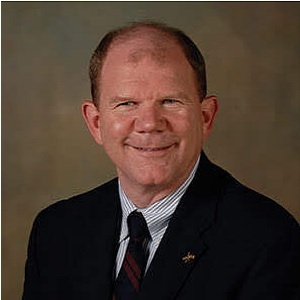Switching from Texas' current electricity market structure to a "capacity market" will make electricity bills in the state go up but not make the grid, which teetered almost to a halt in February, more reliable, according to a recent report.
If Texas were to switch to a capacity market, its electrical delivery system would end up looking more like a couple of regulation-supporting states, said Bill Peacock, the policy director of Energy Alliance, in the executive summary of his report issued late last month.
"If successful, Texans will have an electricity grid that looks much like those of California and New York. No more reliable but a lot more expensive," Peacock said in the eight-page report.

Energy Alliance Policy Director Bill Peacock
| linkedin.com/in/bill-peacock-1a12526
Energy Alliance is a project of the nonprofit, nonpartisan Texas Business Coalition.
A capacity market might be exactly what Texas could end up with. In his report, Peacock warned of efforts "in the Texas capitol to finish off the Texas electricity market," referring to legislation in the House.
"The push to exchange Texas' 'energy only' market for a 'capacity' market in which generators get paid just for existing – then get paid again when they sell electricity," the report said. "This double-dipping would increase the cost of electricity for Texas consumers somewhere between $4 billion to $8 billion per year."
Texas' current electricity market structure is more than two decades old and was set up by the Legislature in an attempt to create a competition-based marketplace. The system relies on buyers and sellers to inform generators how much electricity Texans need, and the price gets set from there.
"Capacity market auctions determine, three years in advance, what price generators will receive to make their output available to grid operators," Reuters said in an explainer article published in February. "Generators get paid whether they produce power or not."
That means generators in a capacity market get paid simply to exist. They are then paid again when they sell electricity, a form of double-dipping that naturally would increase the cost of electricity for Texas consumers.
Capacity market proponents counter that a capacity market will improve grid capacity and avoid conditions such as the widespread blackouts during February's winter storm. However - and not everyone agrees - capacity didn't cause Texas' winter storm disaster and switching to a capacity market could raise rates without resolving the real issues behind February's weather disaster.
A couple of weeks before he was fired, then Electric Reliability Council of Texas (ERCOT) President Bill Magness told Texas Monthly that state lawmakers would be better off exploring weatherization mandates. Pushing power generators to invest in more generating capacity probably would raise Texans’ electricity bills, he argued.
"Is it worth the cost to consumers?" Magnus asked Texas Monthly.
When asked whether ERCOT could answer that question, Magnus replied, "I am not aware that we have ever conducted a real cost-benefit analysis on that topic."
The debate is far from new. In December 2013, the Texas Coalition for Affordable Power and the Steering Committee of Cities Served by Oncor issued a report warning that a capacity market in Texas will lead to expensive subsidies and new regulations, in addition to billions in higher prices.
"Many of the calls for a capacity market have been premised on speculative and historically inaccurate technical projections and rare extreme weather events," the 29-page report said.
Capacity markets in other states "have not worked well" and even power generators "have noted serious challenges," the report said, adding, "Authorizing capacity subsidies would mark a significant departure from the free market principles under which Texas deregulated its electricity market."
Little has changed since 2013 regarding the pros and cons of capacity markets in Texas, where an in-state example already exists.
The Operating Reserve Demand Curve, a tool used by energy regulators to artificially increase the cost of electricity, often kicks in over the activity of unreliable renewable generators. ORDC increased the price of electricity in Texas by $3.6 billion in 2019, an increase completely outside of the control of consumers, according to research, also by Peacock for the Energy Alliance, issued in August.
That amounts to an energy tax, according to Peacock's August report.
"Unlike most taxes, though, the money from the ORDC goes straight to generators as a subsidy," Peacock's August report said, which added that the ORDC kicked in "under conditions of scarcity."
"The ORDC has been in place for several years but was increased about $2 billion by the [Texas] Public Utility Commission in 2019," the August report said. "The PUC has also increased the ORDC in 2020. Thus, the cost of the ORDC could increase significantly this year, depending on market conditions."
The Energy Alliance is not alone in its objections. The Texas Public Policy Foundation also maintains that the implementation of a capacity market will "do little more than import failed regulatory policies from the Northeast," as reported by the Lone Star Standard.
Despite Peacock's observations, there is a move in the Texas House to abandon the state's current market approach in its energy market.
Sponsored by Rep. Chris Paddie (R-Marshall), House Bill 4378 would switch the state to a capacity market.
Paddie introduced the bill into the House on March 12. The bill has since passed first reading and had public hearing before it was referred April 8 to the House State Affairs Committee, where it has been pending ever since.

